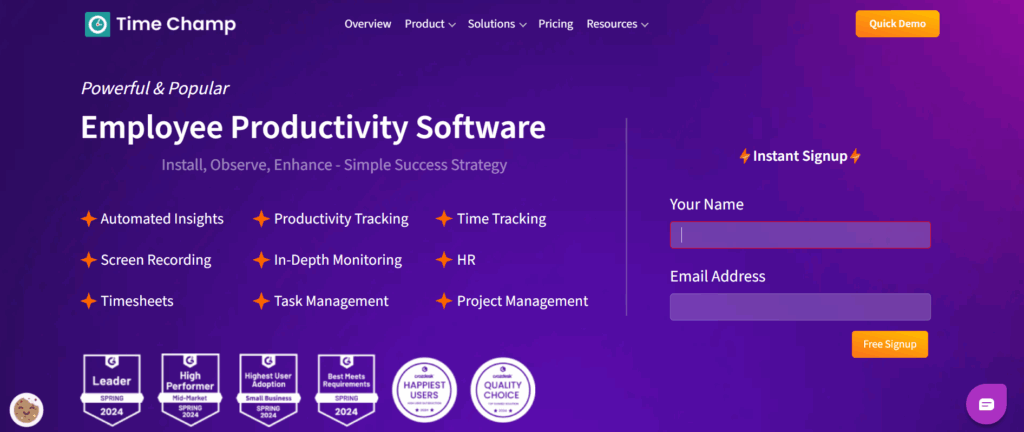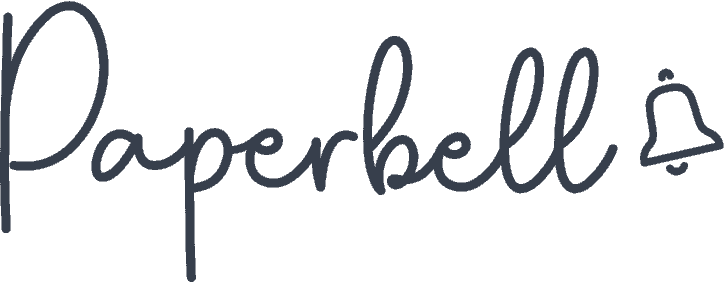As life coaches, it can be a balancing act to get through your session schedule and still make time for managing and growing your business.
The right systems can help you get the most out of your time spent with work and free up space for more rest and innovation.
Intrigued? Read on to discover 14 game-changer methods for time management.
[ Read: Why Is Time Management Important? The Top 5 Danger Signs You’re Wasting Time ]
14 Time Management Systems You Can Start Using Today
1. The Get Things Done (GTD) Method
Created by David Allen, GTD is one of the simplest and most effective time management methods.
The idea is that the moment you have a new idea or remember a task that needs to be done, no matter how small, you record it (ideally, in a digital format).
Next, you break down bigger tasks into smaller actions. For example, if you have to create content for a webinar, break it down into:
- Brainstorming ideas for your presentation
- Researching relevant sources
- Outlining your presentation
- Drafting your presentation
- Creating slides
And so on.
When you break down intimidating projects into specific tasks, you can clearly see your next step and how long it would take, making it seem much more doable.
Here’s a visual representation of how the GTD method works:
Once you have your task list, start prioritizing. Sort your to-dos by urgency, importance, and perhaps even the potential thrill of completing them.
The aim is to streamline your focus and ensure you always address what matters most at any given moment.
2. Time-Tracking Software
Time-tracking tools show you how long routine tasks take and what’s eating up your time on a daily or weekly basis. Here are some you can try.
Toggl Track
Toggl Track is extremely simple. You hit a button, start a task, and you’re tracking. Create projects, record time spent on tasks, and dive into detailed reports.
Want to know how long a task spanning over multiple days took? Or which project ate up most of your time this week? This time-tracking app will tell you.
Harvest
Harvest can spot when you’re probably taking a coffee break (or maybe just daydreaming) and pausing your tracking. No inflated hours here.
If you bill some of your clients by the hour, you can turn your hours tracked straight into invoices.
RescueTime
You don’t need to tell RescueTime when to start or stop; it intuitively knows. It quietly keeps tabs on how you spend your time online with its Timesheets AI feature, sending you handy reports later.
Apploye
Apploye helps you track your time spent on projects to stay productive day to day. If you have a team of freelancers, you can also use it to check what they are working on.
Apploye can also take AI-powered live screenshots, create productivity reports, and create invoices.
Time Champ

You don’t have to micromanage your schedule, Time Champ streamlines time management for you. It automatically monitors tasks and activities, helping you see exactly where your hours go. With detailed insights and reports, it guides you to plan smarter, eliminate distractions, and make every minute count.
3. The Pomodoro Technique
Ever felt like your attention span is shorter than a TikTok reel? Pomodoro is here to save your day.
Francesco Cirillo, the brain behind this time management tool, used a tomato-shaped kitchen timer back in the late 1980s. And in Italian, pomodoro means tomato. Makes sense now, right?
Here’s how it works: During the 25 minutes of a “Pomodoro,” you’re laser-focused. No distractions, no checking emails or social media notifications. By dedicating your full attention to the task, you can accomplish more in a shorter amount of time.
After 25 minutes, you take a 5-minute break. You can use this time to stretch or refill your mug. These short breaks are essential for rejuvenating your mind and preventing burnout. They also serve as a reward for your hyper-focused work.
After doing four cycles of Pomodoro, you can enjoy a longer break. You could maybe step outside, do a bit of meditation, or do a happy dance.
Here’s what you can achieve using the Pomodoro technique.
- Beat procrastination: Big tasks seem scary but bite-sized chunks are totally doable. No more putting things off!
- Master your time: With set focus time and breaks, you get a real sense of your work rhythm. You’re more in control, knowing where every minute goes.
- Focus: With regular practice, your brain can zoom in during those 25 minutes. Distractions fade, and you get stuff done.
If you’re looking to increase productivity and keep distractions at arm’s length, the Pomodoro technique is your answer.
4. The Eisenhower Framework
Inspired by former US President Dwight D. Eisenhower, this one is all about organizing tasks smartly.
The four quadrants of this model are:
- Do First: Tasks that are urgent and important. Tackle these right away.
- Schedule: Tasks that are important, but not urgent. Plan them for later.
- Delegate: Some tasks need doing, but not necessarily by you. Pass them on to someone else.
- Don’t Do: Surprisingly, not every task on your list needs your attention. Recognize them and, if possible, remove them.
With the Eisenhower framework, task management gets simpler. You know what to handle now, what to plan for a later date, and what to hand off.
It’s also one of the best time management coaching tools for busy clients.
5. Time blocking
Time blocking is all about scheduling tasks (not just meetings) in advance. Allocating sufficient time for planned actions has several benefits:
- It helps you focus: When you know you only have, say, 30 minutes to tackle something, your concentration kicks in.
- No need to multitask: Juggling multiple tasks or clients often means nothing gets the attention it deserves. With time blocking, you’re all in on one thing.
- Predictability: You know what’s coming next. After emails, it’s project work. After that, a break. Everything in its time.
A hot tip when using time blocking: know when you’re at your best. If you’re a morning person, slot those high-brainpower tasks for the AM. If post-lunch is when you hit your stride, that’s your golden hour.
For instance, I don’t let anyone book calls in my calendar before 10 a.m. because that’s my focus time. But I can get coaching done in the afternoon without any issues!
And hey, life’s unpredictable. So, sprinkle in some buffer blocks, like a 10-minute gap between major tasks.
6. Kanban Boards
If you’re a fan of visual task management, this is for you. It goes like this…
You label each column on your board with the various stages of your project or to-do list, such as task list, in progress, or completed.
Every task gets its own card and goes in your first column. As you work through them, you move them along the other columns. This helps visualize your progress, which is deeply satisfying.
A Kanban board doesn’t just show you what you have to work on but where you’re getting stuck. If there are too many cards in the “in progress” column, you may have a multitasking issue.
One of the easiest digital Kanban tools is Trello.
7. Eat That Frog
If a huge, scary task is looming over your day, Brian Tracy suggests facing it first thing in the morning.
Knocking out that big task early gives you a sense of achievement. It’s like winning a mini-championship before lunchtime.
You won’t be dreading it all day, and you’ll stop procrastinating. Once that “frog” is out of the way, the rest of your tasks will feel like a breeze.
So, next time you’ve got that giant task staring you down, remember to eat that frog and clear your plate for the day.
8. The Iceberg Method
The Iceberg Method is based on the idea that what you see (your planned tasks) is only a small part of the full picture, while hidden tasks and distractions (unplanned work, procrastination, interruptions) take up more time than expected—just like the hidden mass of an iceberg beneath the surface.
How it works:
- Acknowledge the “hidden work”. Recognize that tasks often take longer due to hidden factors, like unexpected emails or extra revisions.
- Plan for the unseen. Allocate extra buffer time for tasks instead of scheduling back-to-back.
- Reduce the iceberg’s size. Use strategies like time blocking, prioritization, and automation to minimize unplanned work.
This prevents over-scheduling and leads to more realistic planning.
9. Bullet Journaling
Bullet journaling is a flexible, paper-based way to organize tasks, notes, and ideas in a notebook. It was created by Ryder Carroll to help people stay productive without rigid planners.
Here’s how it works:
- Log tasks, events, and notes in your journal as short bullet points and mark them with their respective symbols, like O for ideas and – for tasks.
- Organize your bullet points into sections like:
- A future log for long-term plans
- A monthly log for upcoming goals and events
- A daily log for tasks and notes for the day
- Collections of books to read, habits, etc.
- Cross out completed tasks and move unfinished ones to another day or month.
It’s customizable, distraction-free, and keeps everything in one place, making it a great option if you love paper-based tracking tools.
10. Autofocus
The Autofocus method, created by Mark Forster, is a flexible system that relies on intuition rather than strict prioritization.
You maintain a running list of tasks, skim through them, and choose the one that naturally draws your attention. You work on it for as long as you feel engaged, then either complete it or move on, repeating the process.
Unlike traditional to-do lists or rigid time-blocking systems, Autofocus removes pressure and overwhelm by letting your mind dictate what feels most doable in the moment, making it ideal for those who struggle with prioritization or motivation.
11. The 7-Minute Life Method
This method, created by Allyson and Bryan Lewis, involves tackling tasks in seven-minute chunks.
If you tend to push aside tasks thinking they will take too much time, this method eliminates the pressure by only giving them seven minutes.
You might be surprised at what you can achieve in such a short time span. As you repeat this, you’ll feel the momentum building up, and before you know it, what once felt like a mountain becomes more manageable.
12. The 2-Minute Rule
Small tasks that make you think “I’ll just do it later” can add up, clogging your to-do list and clouding your mind.
David Allen, a productivity consultant, says if a task takes you less than two minutes to complete, do it right away—no need to track time.
It pushes you to handle small tasks on the spot, keeping your task list shorter and your momentum going.
13. The 4D Technique
The 4D technique is extremely similar to the Eisenhower method listed earlier, but with a neat acronym.
If you have a task, you have four options:
- Do: If it’s crucial and needs your attention, roll up your sleeves and get to it.
- Delegate: If someone else can handle it, hand it over. It frees up your plate and gets the job done.
- Defer: Not urgent right now? Schedule it for later.
- Delete: If it’s not adding value or aligning with your goals, scratch it off.
Don’t have anyone to delegate to? Consider hiring a project manager or a virtual assistant.
By using the 4D technique, you ensure you invest your time where it counts the most.
14. The 1-3-5 Rule
Got a long to-do list staring back at you? Here’s how you can make it more manageable with the 1-3-5 rule.
Each day, pick:
- One big task
- Three medium tasks
- Five small tasks
That’s doable, right?
The best thing about this rule is that it helps balance your day. You’re not stuck doing tiny tasks or drowning in a big project. You spread your energy across tasks of varying sizes.
By following this rule, you’ll have a clear plan for your day, and ticking off your eight tasks, big or small, will give you that sweet sense of achievement.
Less Juggling, More Coaching
Time management skills are important. But an even better way to save time as a coach is to eliminate the busywork of client management.
Paperbell handles your website, bookings, payments, contracts, surveys, email automation, and a lot more.
Spend less time on admin and more time making an impact. Ready to streamline your workflow? Try Paperbell for free and take back your time.
Editor’s Note: This post was originally published in October 2023 and has since been updated for accuracy.








